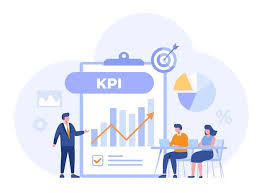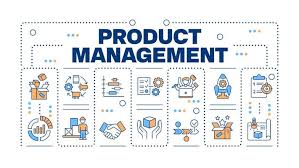How can you ensure effective knowledge transfer and continuity between teams?
The true competitive edge often lies not just in groundbreaking technology or robust financial models, but in the seamless flow of knowledge and the unwavering continuity of expertise within an organization. Neglecting the intricate human and procedural elements of a company can lead to unforeseen challenges and derail even the most promising deals. As senior experts in Technology Due Diligence and Product Due Diligence, we understand that a thorough evaluation of an organization's team structure, governance, and skills is paramount for unlocking potential and ensuring long-term success.
The Foundational Importance of Knowledge Transfer
At its core, knowledge transfer (KT) is the systematic process of sharing critical information, skills, and expertise from one individual, team, or department to another within a business. This vital process encompasses two key types:
• Tacit knowledge: Often referred to as "know-how," this is difficult to document and includes personal insights, experiences, and problem-solving skills developed over time.
• Explicit knowledge: This involves formalized information, such as documented procedures, reports, and policies, which can be easily shared through written materials or digital platforms.
The benefits of effective knowledge transfer are far-reaching, directly impacting an organization's bottom line. It is crucial for ensuring business continuity, especially during leadership transitions, by preventing the loss of critical institutional knowledge and talent. KT boosts innovation by fostering diverse perspectives and new approaches to problems. It enhances competitiveness by keeping teams abreast of technological advancements and market trends. Furthermore, it mitigates risks like costly errors and project delays due to lack of expertise.
Knowledge transfer is also essential for onboarding new employees quickly and effectively, supporting succession planning for key roles, and driving process improvement by identifying and sharing best practices. Ultimately, it nurtures a continuous learning and improvement culture, leading to a more skilled and knowledgeable workforce and improved decision-making. Studies indicate that companies prioritizing knowledge transfer are 4.5 times more likely to have highly engaged employees, leading to a 25% increase in productivity and a 35% decrease in employee turnover.
Strategies for Structured Knowledge Transfer
Achieving seamless knowledge flow and continuity requires a deliberate, strategic approach.
Develop a Knowledge Transfer Plan
A structured knowledge transfer plan is indispensable for managing transitions smoothly. This involves systematically identifying key areas of knowledge that need to be transferred, setting clear timelines, assigning specific roles and responsibilities to individuals (both outgoing and incoming), and utilizing standardized templates and tools to ensure comprehensive coverage.
Utilize Mentorship and Shadowing Programs
For the elusive tacit knowledge, direct human interaction is key. Mentorship and shadowing programs allow new team members or leaders to observe experienced personnel, gaining insights into organizational culture, decision-making processes, and unwritten rules. This fosters trust, provides real-time learning experiences, and aids in cultural assimilation.
Onboard New Leaders Effectively
Beyond just operational introductions, effective onboarding for new leaders should prioritize knowledge sharing, relationship building, and cultural integration. Providing access to digital tools and scheduling regular check-ins are crucial to support the new leader throughout their transition.
Leverage Knowledge Management Systems (KMS) and Repositories
Digital knowledge management systems (KMS) and repositories are powerful tools for storing, organizing, and sharing explicit knowledge effectively. A well-maintained knowledge repository acts as a single source of truth for documents, policies, and procedures, ensuring that critical information is accessible and up-to-date. Collaborative platforms can also facilitate real-time information exchange.
Foster a Knowledge-Sharing Culture
A successful knowledge transfer doesn't solely rest on formal processes; it requires an organizational culture that champions information exchange. Encouraging open communication, establishing peer mentorship opportunities, and recognizing and rewarding employees who actively participate in knowledge-sharing initiatives can significantly enhance the free flow of information across all levels.
Address Tacit Knowledge Transfer
Transferring "know-how" requires specific strategies beyond traditional documentation. Storytelling, where experienced individuals share experiences and problem-solving approaches, provides valuable context. Video documentation and hands-on learning through leading projects under guidance can also effectively convey tacit knowledge.
Operationalizing Continuity and Preventing Knowledge Loss
For enduring organizational health, particularly in a tech-driven environment, continuous attention to people and processes is critical.
Succession Planning
Succession planning is a proactive measure that identifies and develops future leaders, minimizing disruption during inevitable leadership changes. This involves ongoing knowledge-sharing initiatives to ensure potential successors are well-prepared for senior roles.
Continuous Learning and Development
In the rapidly evolving tech landscape, teams must continuously adapt. This involves ongoing training in security practices, embracing new technologies, and staying informed about emerging vulnerabilities and regulatory changes. Encouraging security professionals to read cyber news, take courses, and earn certifications is vital.
Robust Documentation and Review Processes
Comprehensive technical documentation is paramount for ensuring continuity and quality. This includes clear documentation of system designs, APIs, and processes, along with user guides. Architectural Decision Records (ADRs) capture important architectural decisions, their context, and consequences, aiding knowledge transfer within the team.
A structured technical document review process, performed by experts with domain knowledge, ensures accuracy, completeness, and consistency. This process should involve subject matter experts (SMEs) to verify information and should be integrated into deliverables from the start, just like development or testing. Automated tools can significantly streamline review cycles and manage versions, minimizing errors and ensuring all changes are tracked.
Avoiding Single Points of Failure
Over-reliance on a few individuals for critical skills or expertise presents a significant risk. Distributing tech skills and responsibilities across the team helps mitigate this single point of failure and ensures continuity even if key personnel depart.
Collaborative Work
Encouraging collaborative work among cross-functional teams is essential for breaking down silos and aligning diverse roles towards common goals. Leveraging digital collaboration tools like Slack, Trello, or Asana is particularly effective for creative or geographically dispersed teams, bridging communication gaps and fostering seamless information exchange.
Barriers to Effective Knowledge Transfer
Despite its importance, several common barriers can hinder effective knowledge transfer:
• Inadequate Documentation: A lack of comprehensive or accessible documentation, especially for tacit knowledge, is a major impediment.
• Cultural and Social Challenges: Differences in views or a reluctance to share can complicate the acceptance of knowledge.
• Communication Challenges: Lack of clarity, poor language skills, or a lack of trust can obstruct the flow of information.
• Geographic Dispersion: While tools can help, remote work can introduce coordination challenges in knowledge transfer.
• No Authorized Plan: The absence of a clear, assigned plan and accountability for knowledge management can lead to disorganization.
In conclusion, a proactive, structured approach to knowledge transfer and continuity is not just a best practice; it's a strategic imperative. By understanding the critical role of people, processes, and continuous adaptation, organizations can build resilient foundations, ensuring that valuable knowledge remains a driving force for innovation and sustained success, especially in high-stakes ventures like M&A



















